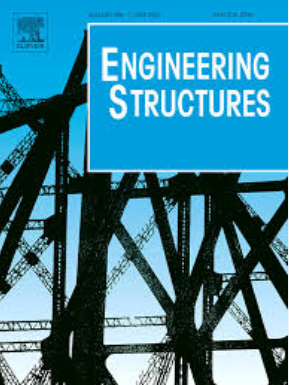基于迁移学习的钢筋混凝土裂缝声发射源定位框架
IF 5.6
1区 工程技术
Q1 ENGINEERING, CIVIL
引用次数: 0
摘要
深度学习模型已经成为声发射(AE)源定位的一种很有前途的解决方案,它对钢筋混凝土等复合材料具有适应性。然而,现有的深度学习模型往往依赖于来自模拟源的声发射数据,例如铅笔芯断裂或球撞击,这些数据可能无法准确地代表真实的裂缝,从而限制了深度学习模型的性能。提出了一种基于迁移学习的钢筋混凝土构件声发射源定位深度学习模型。该模型由源模型和目标模型组成,源模型和目标模型均采用一维卷积神经网络(CNN)和全连接层构建。源模型在模拟声发射数据集上训练,并将其一维CNN传递到目标模型中。然后使用在四点弯曲试验中收集的真实裂纹的有限声发射数据对目标模型进行微调。训练后的模型通过输出基于网格的概率图来定位真实裂缝中的声发射源。比较了迁移学习前后模型的性能。此外,通过实际桥梁的现场测试,研究了该模型对噪声的鲁棒性。并对未见钢筋混凝土构件的泛化性能进行了研究。此外,采用t分布随机邻居嵌入分析可解释性。结果表明,该模型对钢筋混凝土构件实际裂缝声发射源定位是有效的。此外,该模型在噪声条件下仍然具有鲁棒性,表明了其在实际声发射源定位应用中的有效性。本文章由计算机程序翻译,如有差异,请以英文原文为准。
A transfer learning-based framework for acoustic emission source localization of real cracks in reinforced concrete
Deep learning models have emerged as a promising solution for acoustic emission (AE) source localization, offering adaptability to composite materials like reinforced concrete. However, existing deep learning models often rely on AE data from simulated sources, such as pencil lead breakage or ball impact, which may not accurately represent real cracks, thereby limiting the performance of deep learning models. This paper proposes a novel deep learning model based on transfer learning for AE source localization of real cracks in reinforced concrete components. The proposed model consists of a source model and a target model, both built with a 1-dimensional convolutional neural network (CNN) and fully connected layers. The source model is trained on a simulated AE dataset, and its 1-dimensional CNN is transferred to the target model. The target model is then fine-tuned using limited AE data from real cracks collected during a four-point bending test. The trained model locates AE sources from real cracks by outputting a grid-based probability map. The performance of the model was compared with and without transfer learning. Additionally, the robustness of the proposed model against noise was investigated through field testing on a real bridge. The generalization performance on unseen reinforced concrete components was also examined. Additionally, t-distributed stochastic neighbor embedding was used to analyze the interpretability. The results indicate the effectiveness of the proposed model in AE source localization of real cracks in reinforced concrete components. Additionally, the model remains robust under noisy conditions, indicates its effectiveness in practical AE source localization applications.
求助全文
通过发布文献求助,成功后即可免费获取论文全文。
去求助
来源期刊

Engineering Structures
工程技术-工程:土木
CiteScore
10.20
自引率
14.50%
发文量
1385
审稿时长
67 days
期刊介绍:
Engineering Structures provides a forum for a broad blend of scientific and technical papers to reflect the evolving needs of the structural engineering and structural mechanics communities. Particularly welcome are contributions dealing with applications of structural engineering and mechanics principles in all areas of technology. The journal aspires to a broad and integrated coverage of the effects of dynamic loadings and of the modelling techniques whereby the structural response to these loadings may be computed.
The scope of Engineering Structures encompasses, but is not restricted to, the following areas: infrastructure engineering; earthquake engineering; structure-fluid-soil interaction; wind engineering; fire engineering; blast engineering; structural reliability/stability; life assessment/integrity; structural health monitoring; multi-hazard engineering; structural dynamics; optimization; expert systems; experimental modelling; performance-based design; multiscale analysis; value engineering.
Topics of interest include: tall buildings; innovative structures; environmentally responsive structures; bridges; stadiums; commercial and public buildings; transmission towers; television and telecommunication masts; foldable structures; cooling towers; plates and shells; suspension structures; protective structures; smart structures; nuclear reactors; dams; pressure vessels; pipelines; tunnels.
Engineering Structures also publishes review articles, short communications and discussions, book reviews, and a diary on international events related to any aspect of structural engineering.
 求助内容:
求助内容: 应助结果提醒方式:
应助结果提醒方式:


